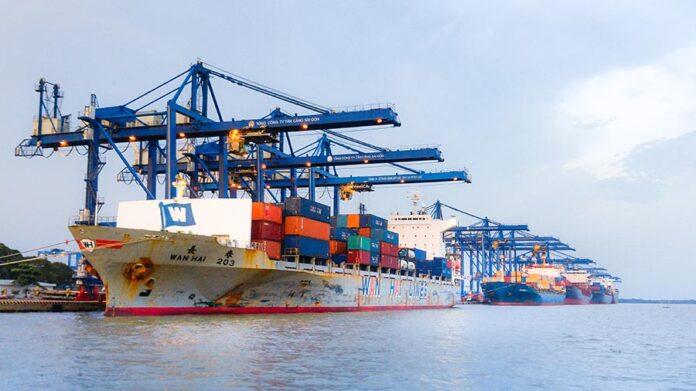
-
Vietnam’s Quang Nam seaports headed for new breakthroughs
-
A surge in the volume of cargo handled by Quang Nam’s seaports in recent years is seen to hit new highs in the near future
-
Throughput for the first three months this year topped 702,820 tons after the ports reached their target of more than 2.5 million tons in 2021
-
Soaring export and import volumes through the Chu Lai Open Economic Zone ports should exceed 4 million tons this year and reach 13-16 million tons by 2030
Seaports in province of Quang Nam on Central Vietnam have recorded a surge in the volume of handled cargo in recent years and are expected to make new breakthroughs, Vietnam News Agency reported.
Cargo throughput at local seaports still achieved the target of more than 2.5 million tons in 2021 despite the impact of the COVID-19 pandemic, VNA said.
For the first three months of 2022, the figure topped 702,820 tons, including 144,050 tons of exports, 86,847 tons of imports, and 471,923 tons of domestic cargo, VNA cited Quang Nam Maritime Port Authority director Truong Hoan Lac.
Lac said that with production and throughput growth, especially the soaring volume of exports and imports via seaports in the Chu Lai Open Economic Zone, cargo handled at seaports in the province is forecast to surpass 4 million tons this year and reach 13-16 million tons by 2030.
Investment advisors Dezan Shira and Associates said in their Vietnam Briefing report that Chu Lai Port, Quang Nam’s second biggest port after Ky Ha Port, has attracted 158 investors and US$4.5 billion in total investment in the Chu Lai Open Economic Zone.
Quang Nam boasts many advantages, thanks to connections by air, road, railway and sea, while transport infrastructure is relatively comprehensive. The task now is to tap into the local potential to develop seaports, Lac noted.
A representative of the Vietnam Maritime Administration said Quang Nam, with a more than 100km-long coast, was identified by the Ministry of Transport as an important seaport center in the central region.
Established in 2011, the Quang Nam Maritime Port Authority has been continually making reforms, improving efficiency and effectiveness of its governance, and creating optimal conditions for seaport activities to become a key part of the service sector.
Lac said the authority is working to apply online public services at Levels 3 and 4, the highest levels, for most administrative procedures for vessels arriving at and leaving the local seaports.
The time needed for handling procedures has been shortened from one hour to 15-30 minutes, while 98% of the procedures are handled electronically, thereby creating a favorable and transparent environment for enterprises.
This has encouraged maritime activities and won over maritime transportation companies, thus helping improve the competitiveness of local seaports, the official added.
In the planning scheme on the development of Vietnam’s seaport system by 2020 with a vision to 2030, Chu Lai Port in the Chu Lai Open Economic Zone is one of 15 of its kind nationwide to be developed from a second-tier seaport (which means a local integrated seaport) into a first-tier one, a national port that serves as a regional gateway.
To do that, the Quang Nam People’s Committee approved a plan on the Chu Lai Port’s development that aims to turn the facility into a center of domestic and international transport and trade in the central and Central Highlands regions, and a gateway to the East Sea of the Central Highlands, southern Laos, northeastern Cambodia, and Thailand, VNA said.




